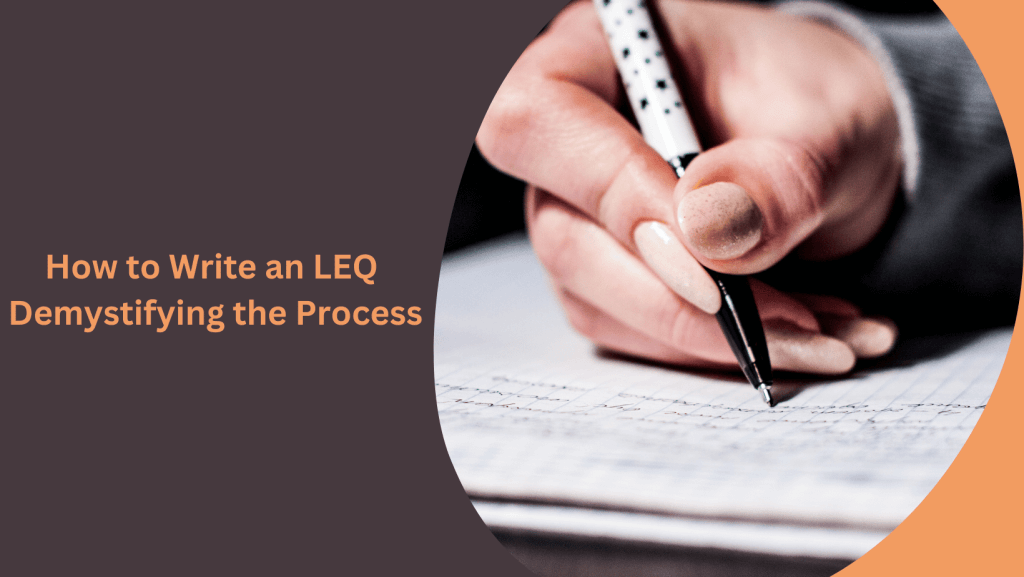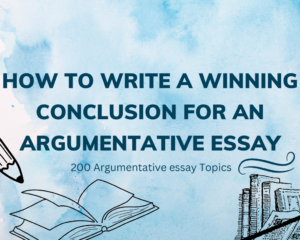Long Essay Questions (LEQ) are the most essential sections to consider when taking AP World History. Students who master how to write an LEQ enhance their historical analysis competence, academic prowess, and critical thinking skills, which are crucial to academic excellence. In this article, our History experts teach all the fundamentals of writing an LEQ. They also help students write Long Essay Questions (LEQ) and AP World History exams.
How to Write an LEQ: Challenges Students Face
Writing Long Essay Questions (LEQ) in any academic discipline is a daunting task many students grapple with. Here are common challenges students face in writing these types of essays.
- Understanding the LEQ Prompt: Breaking down complex prompt keywords and understanding the essay’s scope and requirements poses a formidable challenge for many students.
- Conducting Research: Evaluating and understanding deep historical events is time-consuming and requires great organizational skills, which many students lack.
- Structuring the Essay: Logically organizing a thesis body that ensures a smooth transition of thoughts is a struggle for many students.
- Writing an Effective Argument: Crafting a robust thesis with well-reasoned arguments and evidence requires a lot of constant practice, which can be overwhelming without support.
- Time Management: Students struggle to allocate enough time for research, writing, and revising LEQs, leading to hurriedly and poorly finished essays.
Analyzing LEQ Prompt
Take time to analyze LEQ questions, also called prompts, before you start writing. Here are things to pay attention to during the analysis:
- Identify the essay prompt topic: This could be a specific historical identity like the Confederacy, Puritanism, or the New Deal. Alternatively, it could be based on historical concepts like liberalism or republicanism or a process like industrialization or Westernization.
- Identify the date range or periodization. Ensure the response addresses the era in question. Consider underlining the periods as you read.
- Note all parts of the question: Identify all parts to be addressed. Note that one sentence may encompass two or more aspects of the question. For instance, in this question, “Evaluate the significance of domestic and foreign affairs in influencing American politics during the 1790s,” you must address both foreign and domestic affairs.
- Identify the required tasks: Underline or circle each task as you read. Pay attention to keywords such as analyze, explain, describe, or identify.
How to Write an LEQ: Comprehensive Guide
Here’s a comprehensive guide on crafting an LEQ essay from start to finish.
LEQ Outline
An LEQ outline includes the following three parts:
- Introduction/Contextualization
- Thesis Statement
- Conclusion
Contextualization
This is an introductory paragraph that includes historical information relevant to the question or prompt. Think of historical events, processes, or developments that transpire before, during, and after the question’s time frame. Highlight these in a maximum of four sentences; the last sentence is your thesis statement.
Thesis Statement
Your thesis answers the prompt, trying to prove your historical claims by developing a line of reasoning. Ensure the thesis responds to the prompt instead of restating or rephrasing it. It should be 1-2 sentences maximum. A strong thesis also includes dates, which could be an era and location in question. Address the “How” and “Why” concerning the topic in a precise language.
Tips for Structuring Body Paragraphs
- The body paragraphs should delve deep into what you’re trying to prove.
- Arrange the paragraphs in ascending order based on importance unless you intend to address points chronologically.
- Generally, long essay questions require three paragraphs. You may write two depending on the essay question guides.
- Discuss the causes of specific historical events and the specific reasons for the causes. The evidence should extend beyond why they happened.
- All evidence used must be specific and relevant to the prompt.
- Use names, dates, and pieces of literature that are relevant to the essay.
- Apply historical reasoning, such as comparison or causation, to structure your argument.
- Demonstrate a complex understanding of historical events using evidence to qualify, corroborate, or modify the argument that addresses the prompt.
- Refrain from using first-person pronouns- I, you, your, we, our, my, or me.
- Avoid answering questions in bullet points.
- Use sophisticated language to give a more descriptive essay. For instance, instead of “The assassination caused the war,” use “The assassination provoked the war outbreak.”
Conclusion
Restate the thesis by summarizing key points and reinforcing central arguments. Do not introduce a new idea at the conclusion. You can mention the implication of the historical event on the future. Keep it brief—2-3 sentences.
Get Help on Long Essay Questions
Writing Long Essay Questions (LEQ) poses a significant challenge to students compared to other types of writing. These essays demand a deep understanding of prompts, meticulous research, and structured writing with specific time constraints. This can be overwhelming without proper support and guidance. Our history professionals are ready to help you craft a well-rounded LEQ essay on history and social studies or take the AP World History exam.




